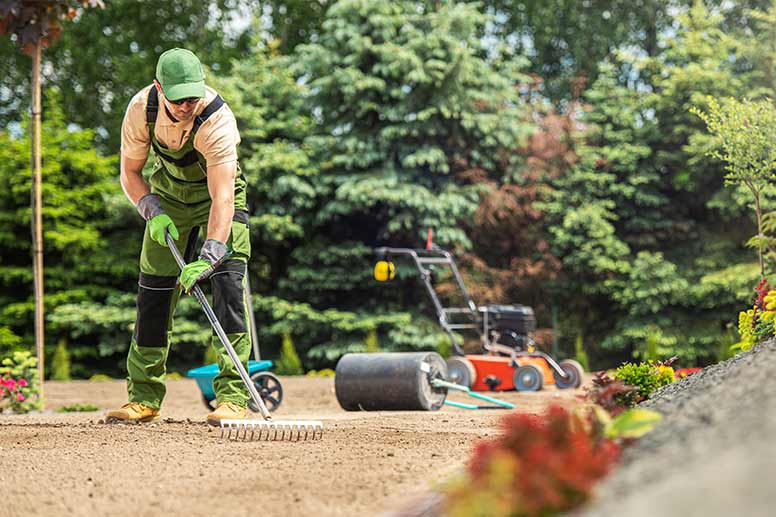How to Get a License for Landscaping

Table of Contents
- What is a Landscaping License?
- Why is it Important to Have a Landscaping License?
- How Much Does It Cost to Get a Landscaping License?
- Types of Landscaping Licenses in the United States:
- Steps to Get a Landscaping License
- State-Specific Requirements for Landscaping Licenses
- Additional Tips for Getting a Landscaping License
- How a Landscaping License Can Boost Your Earnings
- Final Thoughts
If you’re looking to legally perform landscaping work and access better opportunities, obtaining a landscaping license is a crucial step.
Whether you plan to work independently, start your own business, or take on larger projects, having the right license ensures compliance with state regulations and builds trust with clients. It’s not just about following the rules—it’s about opening doors to bigger jobs and higher pay.
In this guide, we’ll walk you through the process of getting a landscaping license, explain its importance, and highlight specific requirements in states like California, Florida, and Texas.
What is a Landscaping License?
A landscaping license is a certification issued by state regulatory bodies that allows professionals to legally perform specific landscaping services.
These tasks range from softscaping (like planting, pruning, lawn mowing, and garden maintenance) to hardscaping (installing patios, decks, retaining walls, and irrigation systems).
The exact requirements for a license vary widely from state to state. Some states require additional certifications for specialized work like applying pesticides, installing irrigation systems, or handling large construction projects.
It’s important to check your contractor state licensing board to ensure compliance.
RELATED ARTICLE: How To Start A Landscaping Business? Easy 13 Step Guide
Why is it Important to Have a Landscaping License?
Getting a landscaping license isn’t just a formality—it’s a badge of expertise and professionalism that can boost your reputation and help you build a thriving client base. Here’s why:
- Increased Credibility: A license shows that you are knowledgeable, trained, and legally authorized to perform landscaping work. Clients trust licensed professionals more.
- More Opportunities: Many clients, larger companies, and government projects only hire licensed landscapers.
- Legal Compliance: Licensing ensures you comply with state laws, avoiding fines or potential legal issues.
- Higher Earning Potential: Licensed landscapers often command better rates than unlicensed workers.

How Much Does It Cost to Get a Landscaping License?
The cost of obtaining a landscaping license varies depending on your state and the type of license.
In total, the process can cost between $200 and $1,000, depending on the state’s requirements and any additional certifications you might need. Here’s a breakdown of typical expenses:
- Application Fees: $50–$150, depending on the license type and state.
- Examination Fees: Some states require exams, which cost around $100–$300.
- Background Checks: Fingerprinting and background checks can cost $30–$100.
- Bonding and Insurance: Liability insurance or bonding is often required, which can add several hundred dollars to your initial costs.

Types of Landscaping Licenses in the United States:
- General Landscaping License
- Landscaping Contractor License.
- General Contractor License
- Irrigation or Sprinkler License
- Pesticide Applicator License
- Arborist or Tree Care License
- Nursery or Horticulture Professional Services License
- Landscape Construction Professional License and Architect License
- Erosion and Sediment Control License
- Swimming Pool and Water Feature License
- Business License
Steps to Get a Landscaping License
While the process may vary slightly depending on where you live, here’s a general pathway to obtaining your landscaping license:
1. Get Education and Training
Some states require formal education in horticulture, landscape design, or a related field. You can gain this knowledge through community colleges, vocational schools, or apprenticeships. Even if it’s not required, pursuing education can set you apart from competitors and give you a strong foundation for your career.
2. Gain Work Experience
Many states require hands-on experience, typically ranging from 1 to 4 years. Working under a licensed landscaper or in a similar role allows you to develop practical skills and gain the experience needed to qualify for a license.
3. Pass Licensing Exams
Most states require you to pass exams that cover topics like landscape design principles, environmental regulations, and plant care. Study materials and practice tests are often available through your state’s licensing board to help you prepare.
4. Submit Your Application
Once you’ve completed the prerequisites, submit your application to the state licensing board. This typically includes providing proof of your experience, paying application fees, and submitting any additional required documents.
5. Maintain and Renew Your License
Licenses are usually valid for 1–3 years, depending on the state, and must be renewed regularly. Many states also require continuing education to ensure your knowledge stays current with industry standards and regulations.
6. Get your employee's EIN Number
If you plan to have employees for your lawn care service business, you will need an Employer Identification Number (EIN). You may need one before applying for a business license or other permits. The nine-digit EIN helps you and your employees submit tax information.
State-Specific Requirements for Landscaping Licenses
Since licensing requirements vary across states, let’s look at the steps for obtaining a landscaping license in three states with substantial landscaping markets: California, Florida, and Texas.
How to Get a Landscaping License in California
California’s landscaping industry is highly regulated, and a C-27 Landscaping Contractor’s License is required to perform any work exceeding $500. Here’s what’s involved:
- Experience requirements: You need four years of experience as a journeyman.
- Application: Submit a license application to the California State Licensing Board (CSLB) with your work experience documentation.
- Exams: Pass two exams – a Law & Business test and a Landscaping-specific test.
- Fingerprinting and Background Check: Complete a background check.
- Business Insurance: Provide proof of a surety bond, workers compensation insurance, and general liability insurance.
Costs typically range from $450 to $1,000, including exam fees, application fees, and background checks. If you plan to apply pesticides, you’ll also need a Qualified Applicator License (QAL) for certain jobs.
How to Get a Landscaping License in Florida
Florida doesn’t require a license for basic landscaping work but does regulate certain specialized tasks. Costs range from $150 to $400, depending on the certifications you need.
- Irrigation Work and Pesticides: You’ll need a Restricted Use Pesticide License for handling chemicals and fertilizers.
- Exams: Pass state-required exams for pest control and irrigation.
- Training: Complete the Green Industries Best Management Practices (GIBMP) training course, mandated by the Florida Department of Environmental Protection, if you plan to work with fertilizers.
How to Get a Landscaping License in Texas
Texas generally doesn’t require a landscaping license but does regulate irrigation systems and pesticide use. Expect to pay a license fee between $200–$500 depending on the certifications you pursue.
- Pesticide License: Landscapers working with pesticides must pass an exam to obtain a Commercial Pesticide Applicator License through the department of pesticide regulation.
- Irrigation License: Apply for a Landscape Irrigator License through the Texas Commission on Environmental Quality (TCEQ) if you plan to install irrigation systems.

Additional Tips for Getting a Landscaping License
- Research Local Laws: Some cities or counties may have additional permits or rules, so it’s essential to check both state and local requirements.
- Consider Continuing Education: Advanced certifications, such as those for sustainable landscaping or hardscaping, can make you more competitive.
- Join a Professional Association: Organizations like the National Association of Landscape Professionals (NALP) offer valuable resources, networking opportunities, and certification programs.
How a Landscaping License Can Boost Your Earnings
Licensed landscapers consistently earn more than their unlicensed counterparts.
For instance, an entry-level landscaper might earn around $26,000 annually, while licensed contractors with experience can make $50,000 or more per year.
Licensing also allows you to:
- Bid on larger, higher-paying projects. Use invoicing tools like our Estimate Generator can help you get your bid right.
- Expand your services to include specialized or regulated work.
- Build a more reputable and trustworthy business.
If you plan to start your own landscaping company, a license is crucial for growing your client base and tackling bigger, more profitable jobs.
Final Thoughts
Getting your landscaping license might take some effort, but it’s a valuable investment in your career.
Licensing not only ensures you comply with the law but also enhances your credibility, earning potential, and opportunities for growth.
Once you have your landscape licenses and business set up you are ready to take the next step running your landscaping business like a pro.
With invoicing software like Invoice Fly you can easily manage your paperwork, clients, and pricing. You’ll soon be on your way to a successful career turning outdoor spaces into thriving landscapes.
Download Invoice Fly today!
